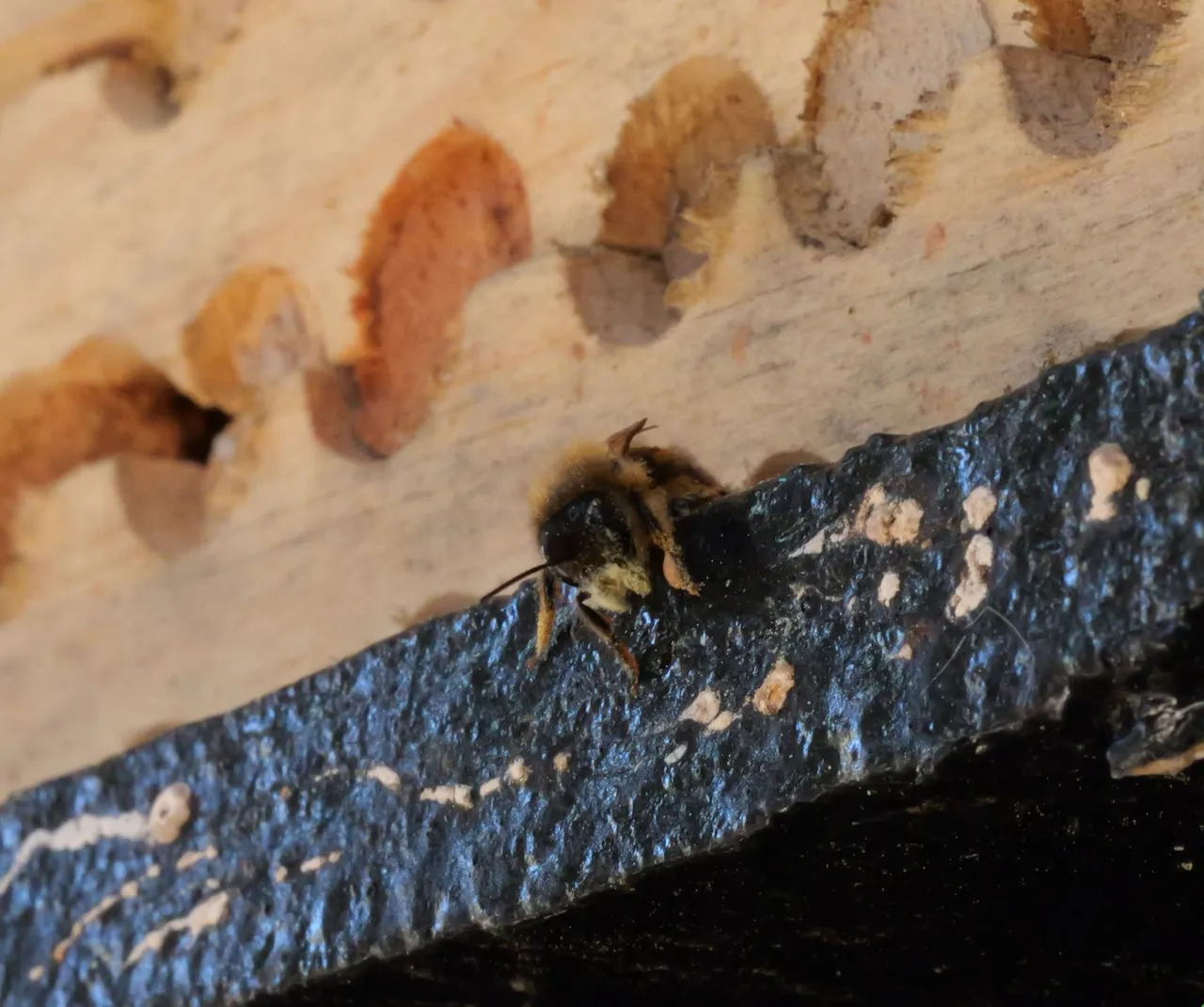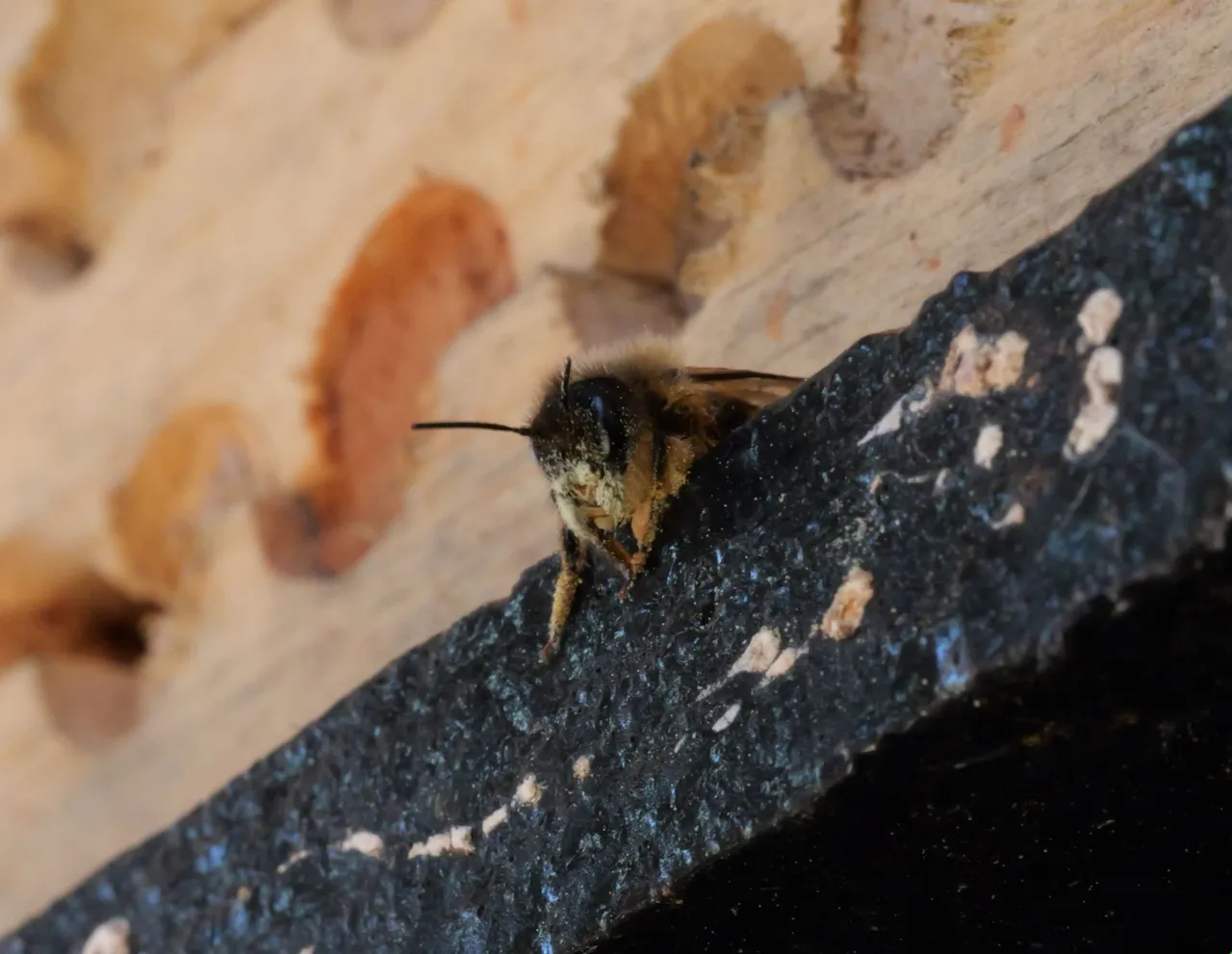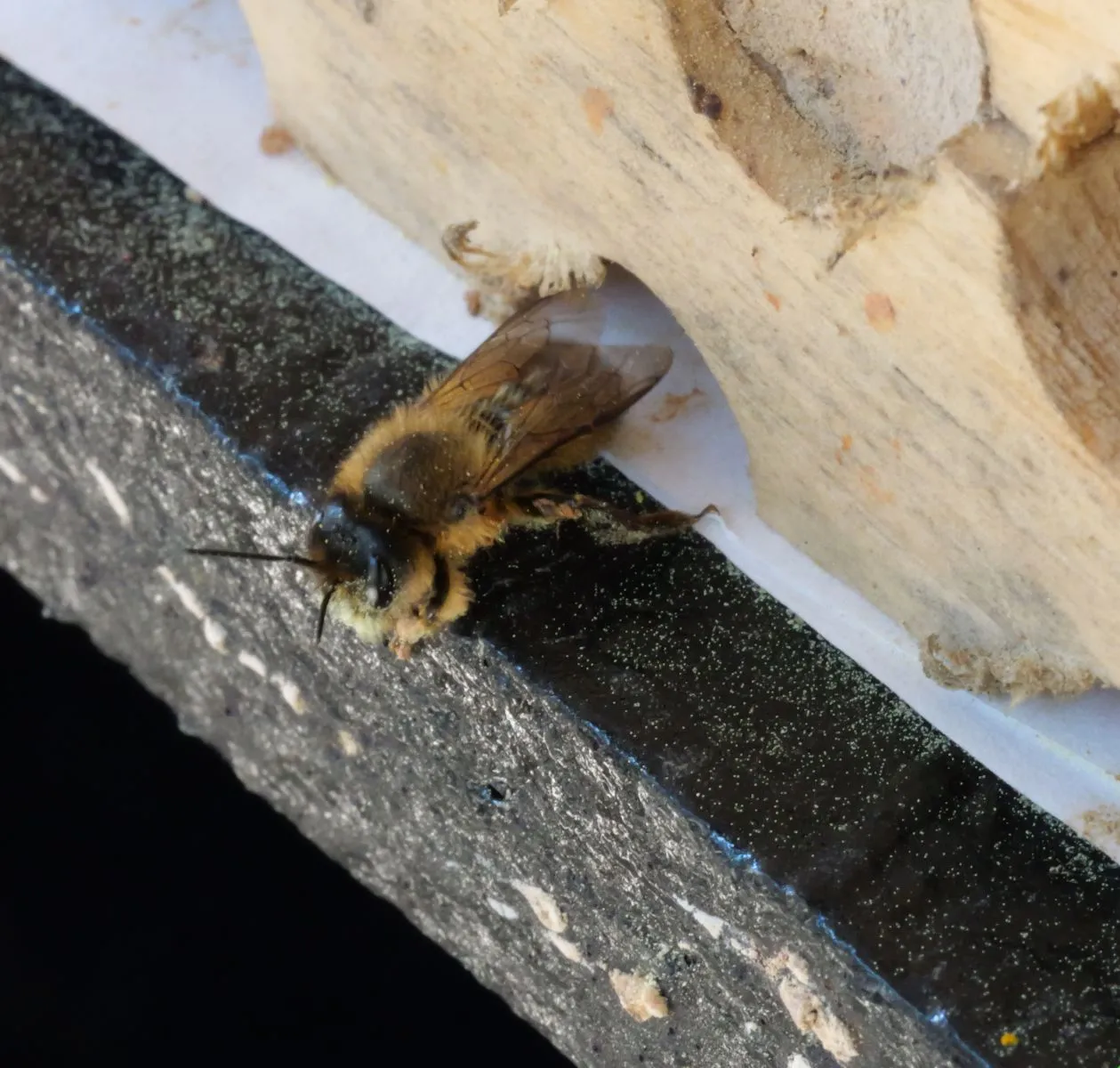During this time of year all of the trees around me are producing lots of pollen, the bees find themselves in the middle of it when visiting flowers. And sometimes they come back home covered in it. The mandibles and legs have a bunch of pollen left over from when visiting near by flowers. These solitary bees will fly up to around 300 feet to flowers all around, so must be something near by producing lots of pollen. We have so many kinds of trees and bushes that produce lots of flowers so its hard to say which one did it.

 Camera Model Camera Model | Lumix GH6 |
|---|---|
 Lens Lens | Olympus MSC ED M. 60mm Macro lens |
 Filter Filter | none |
 Aperture Aperture | f/13 |
 Shutter Speed Shutter Speed | 1/40 sec |
 Film Speed Film Speed | 3200 |
 Spectrum Spectrum | Visual Light |
 Wavelength Wavelength | 380 through 700 nanometers |
 Location Location | North Georgia USA. |

The bees collect this pollen and ball it up for the larva to eat. Building homes in the boards behind this bee they have a safe and clean place to produce their offspring. Each female Mason bee is queen and will produce dozens of larva. Using mud the mason bee seals off each larva compartment and builds the next in the row until the holes are completely filled.

Normally the bees do not get this covered in the pollen, so when I saw it figured it would be a great capture. I do not think it harms the bee, seems like it was just hanging out there taking a minute to itself before getting back to work.

Even above this bee we can see all the pollen on their body, no mites from the looks of it so that is good. Probably just crawled out of that hole, the paper is below the bottom of the homes so they do not mud to the surface of what these boards are resting on. All those yellow dots on the black surface is pollen.. We get counts up into the 10,000s though at the moment it is just in the low 1000s. It gets really bad around here with all the tree flowers producing lots of pollen. Later on in the summer the grass will do the same thing.